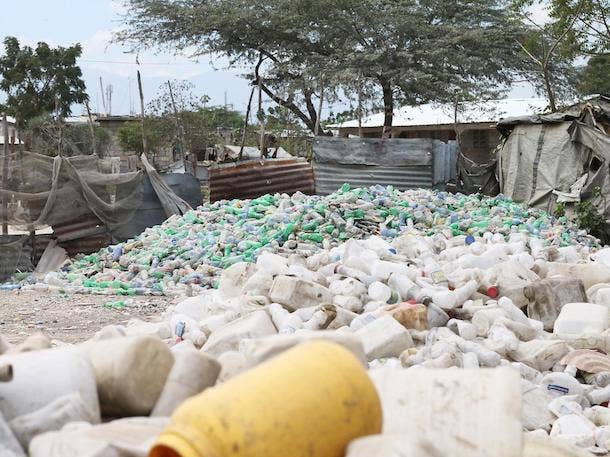HP's Sustainable Impact Report: 5 Key Takeaways For Partners
HP is seeing an increase in new revenue tied to sustainability as it boosts efforts around recycled plastic and ‘zero deforestation’ print paper.

HP reports it has upcycled 716,000 pounds of ocean-bound plastic into its products.
HP Inc. is making big strides toward achieving its environmental and social goals, and that has major implications for the company's business and for partners' businesses, according to the company's 2018 Sustainable Impact Report.
Partners should take note that HP revenue that's tied to sustainability--both indirect and direct revenue--is accelerating.
[Related: The Top 10 Partner Takeaways From HP Reinvent 2019]
The growth comes amid aggressive efforts by HP to make its personal systems and printing products the most sustainable in the industry, the company said.
"Sustainable impact is truly at the heart of our reinvention journey. And what you see in our Sustainable Impact Report is that our results reflect that," said Nate Hurst, chief sustainable impact officer at HP, in an interview with CRN. "It's truly becoming part of each of our business units. It's a core part of our strategy moving forward."
What follows are five key takeaways for partners from HP's 2018 Sustainable Impact Report.
Revenue Tied To Sustainability
HP says that its focus on sustainability is only becoming more closely connected to its business growth.
Sustainable impact was a "key differentiator" in capturing $972 million of new revenue for HP in 2018. That was up 35 percent from $721 million in 2017.
In those deals, sustainability criteria were a "known consideration" for the customers involved, HP said. The figure includes indirect revenue generated by channel partners as well as direct HP sales.
Sustainability has become such an emphasis at HP that there are now regular reports on sustainable impact topics and metrics to the company's board of directors, Hurst said.
"It's led to this feeling and understanding that what's good for the environment is good for business and society," he said. "By doing right for the planet and society, you can grow your business in a right and responsible way, and bring in new revenue opportunities."
Tracking revenue tied to sustainability also makes HP unique, Hurst said.
"Out there amongst our peers, not a lot of companies are really tracking this to the level and degree that we are," he said.
Recycled Plastics
HP has set an ambitious goal for expanding its use of recycled plastics in its personal systems and print products in coming years, the company said.
The Palo Alto, Calif.-based company says it's pursuing an "industry-leading" goal of reaching 30 percent recycled content plastics in print and personal systems by 2025. HP used 7 percent recycled plastics in 2018.
"We're turning up the dial," Hurst said. "Setting a goal often is a great way to coalesce and focus on a strategic imperative.”
Meanwhile, “it sends a signal to the industry that the plastic problem is not going away, and we really need to all do our part to increase the amount of recycled plastic,” he said.
HP saw increases in use of recycled plastic last year across personal systems and printing products, as well as in ink and toner cartridges.
The company's efforts have included scaling up an initiative to source ocean-bound plastic materials for upcycling into HP products, such as the EliteDisplay E273d, which is being manufactured with ocean plastic.
HP has sourced 716,000 pounds of ocean-bound plastic so far and is working with partners to develop "the first global network of ocean-bound plastics supply chains," the company said.
Renewable Energy
HP is working toward the goal of powering its global operations entirely with renewable electricity by 2035. That's through a combination of renewable electricity purchased and generated on-site, along with purchasing renewable electricity certificates.
HP previously hadn't set a timetable on reaching 100 percent globally, Hurst said, "so we're increasing a bit of the pressure we're putting on ourselves."
The company reports that renewable sources accounted for 47 percent of its global electricity consumption in 2018--and covered 100 percent of its U.S. consumption.
Print Paper
HP has been looking to grow its print business while simultaneously boosting its sustainability efforts, which wouldn't seem to go together due to the impact from printing. However, the company has been pushing to achieve "zero deforestation" in its print paper and paper-based product packaging. The company’s message is that by printing with HP-branded paper, individuals are not contributing to a reduction of trees.
Each year since 2016, HP says it has achieved "zero deforestation" for its HP-branded print paper. That has been through using recycled sources, as well as by having new trees planted to make up for any trees that are used in producing HP-branded paper, the company says.
HP also provided for 65 percent of its paper-based product packaging in 2018 through the same means, and has a goal to reach 100 percent by 2020.
Diversity & Inclusion
In its Sustainable Impact Report, HP also addressed its efforts around boosting diversity and inclusion.
In 2018, HP reports that 59 percent of its new hires came from "typically underrepresented groups." Those consisted of "women, minorities, veterans and people with disabilities," HP said.
"For our managers that are doing the hiring within HP, they're really acting on the belief that better innovation does come from diverse, empowered teams," Hurst said.